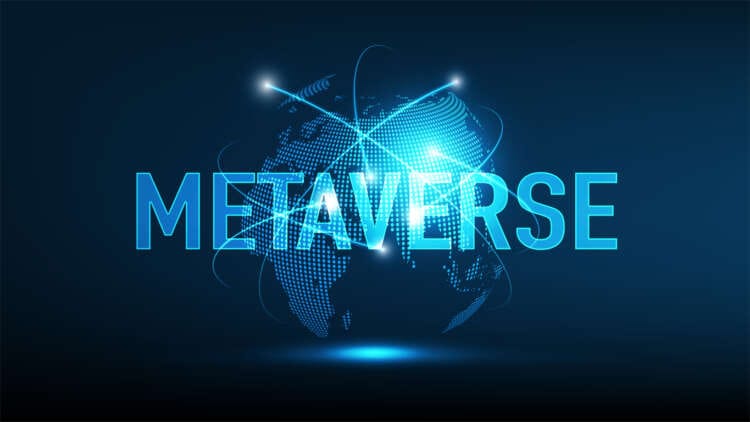

By Raphael Bianchi, Senior Partner and Head of Synpulse Switzerland, Synpulse, Co-Head of Synpulse8, and co-author of the recent Metaverse Report from Institute of Financial Services Zug and Synpulse8
The idea of a comprehensive digital representation of the real world, in which people are portrayed by avatars, has existed for decades. Yet a fully-fledged “metaverse” has so far remained fiction.
Times are changing, however – and fast. Big tech (Meta and Google AR), DLT companies (such as Ethereum), and the gaming industry (Fortnight and Minecraft) are just some examples of the players pushing the innovation needle forward. Together they have brought the concept back into the public discourse, with concrete visions of what the metaverse could look like and how it could impact people’s everyday lives.
According to Google Trends data, global web searches for “metaverse” grew twenty-fold between August and October 2021 after Facebook announced it was rebranding to Meta. In the following eight months the trend among a more general audience had cooled somewhat. But within the financial services industry, there is sustained interest in analysing and understanding the future potential of the metaverse. Research recently released jointly by Synpulse8 and the Institute of Financial Services Zug explored the potential market for the metaverse economy – an industry that is predicted to be worth up to US $13 trillion by 2030.
So, what do financial services (FS) professionals need to know about the current state of play? How might this shape the opportunities it presents for our industry, and how soon can we expect to see a mature FS ecosystem within the metaverse?
The metaverse is an evolutionary development
The metaverse is not a revolution. Instead, it should be understood as an evolution of the internet as we know it today. The concept builds on a shift that was already taking place following the emergence of Web 3.0, when users themselves become the content (think YouTube). That said, the potential flexibility and scale of a metaverse are much greater – it is a comprehensive, purpose-independent virtual world that combines real-life experience and unlimited creation, all underpinned by social and economic systems.
One of the defining factors of a metaverse is that it is not made up of isolated platforms. It promises greater decentralisation and thus easier control and commercialisation of users’ own data. Distributed ledger technology (DLT) can be used to strengthen ownership and disposal rights to personal data, but also to digital or digitally-represented physical goods – for example, in the form of tokenisation.
Avatars are digital representatives with needs
In a metaverse, avatars serve as representatives of real users. They create a new channel through which to satisfy needs based on social aspects that are common to us all – a sense of belonging, esteem, and status.
The design of the avatar therefore takes on an important function and is in turn related to users’ purchasing behaviour in a virtual world. Participants use their avatars to project a certain image by purchasing digital goods like cars or artwork, which ultimately aims to satisfy their social needs.
It is important for companies to explore the potential of this new channel of interaction, with this quickly-evolving field making it possible to continuously expand the range of offerings. This also applies to the financial industry, for which many of the products and services offered in the real world could also find use in the virtual world.
Financial services are still scarce
Financial services remain scarce in the metaverse, but their use-cases are growing. New means of payment have been established in DLT-based virtual worlds by their developers to enable the exchange of goods and services. Meanwhile, established financial institutions are beginning to create metaverse-related thematic ETFs (exchange-traded funds) – for example, the Roundhill Metaverse ETF ($METV).
The latter has also increasingly driven the development of hubs in various virtual worlds, but currently mainly only for the provision of gamified financial information or education and not for the provision of concrete financial solutions to avatar-embodied customers. Early engagement in the metaverse is in many cases aimed at building expertise, identifying collaborative partners in the new ecosystem, and developing hypotheses about future business models.
In the area of deposits and lending, no concrete financial solutions are offered yet. Considering that the metaverse is a virtual representation of the real world, and will therefore mirror business activities taking place today, traditional financial service providers should begin to explore possible applications in the metaverse.
This applies in principle to all areas of traditional finance. While it might initially be difficult for traditional service providers to develop a business strategy, an early foray into the metaverse to test capabilities is likely to leave them better prepared for future adoption and trends.
Investment opportunities for the financial services sector
Although a comprehensive metaverse does not yet exist, its potential should not be ignored – it’s an interesting time for investors who want to capitalise on the development.
Investing in relevant technologies (rather than a metaverse itself) can be a great way for investors to participate. Since direct financial exposure to the metaverse is often not possible, indirect investments in providers of the required technologies are an option. These opportunities largely relate to those technologies that are required for an immersive metaverse experience but are not yet mature or have not yet reached the mainstream. Examples include investments in DLT platforms that could serve as the settlement layer of the metaverse, or in developers of VR or AR devices, avatar development engines, or NFT marketplaces.
Further requirements needed for a broad adoption
For the metaverse to become mainstream, certain challenges need to be solved: the infrastructure must be streamlined; a consistent system for building avatars needs to be developed; and necessary laws and regulations should be put in place to govern the virtual world. A consistent global system needs to be introduced, which empowers the exchange of goods and services, and maps the value placed on different offerings.
The good news for the banking industry is that financial services will therefore be a necessary part of the metaverse’s development and operation. While the opportunities are currently at a nascent stage, there is a strong case to start piloting services and technical approaches now, so companies don’t find themselves behind the curve in a few years’ time. This testing period is also a vital part of encouraging the investment and focus required to scale up a ‘true metaverse’ and tackle the challenges outlined above. Only when these requirements are met can the immense potential of the metaverse be realised.


